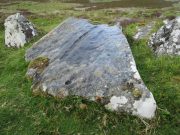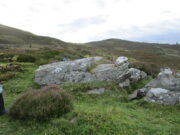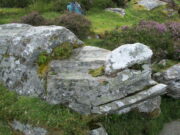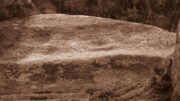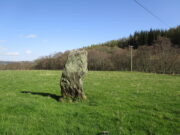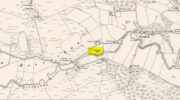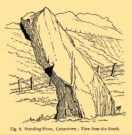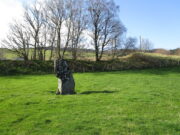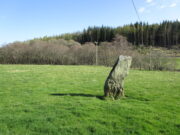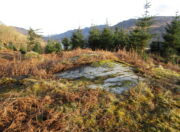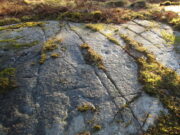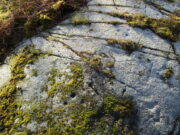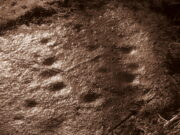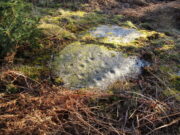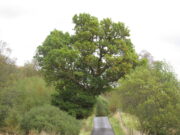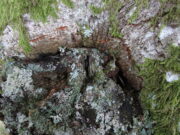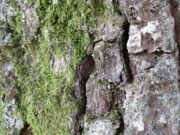Souterrain (lost): OS Grid Reference – NN 9447 5890
Archaeology & History
In Hugh Mitchell’s (1923) survey of prehistoric sites in the Pitlochry district, this long lost souterrain was thankfully captured by his pen. Two years later John Dixon (1925) also mentioned the site, but he was ostensibly copying what Mitchell had written. We were told:
“About 50 yards west of Balnadrum Farmhouse there is a weem or underground Pict’s house, which was revealed a good many years ago by the plough lifting one of the stone covers. The exact position of this weem has been lost site of, but could be found without much trouble. It was about 50 feet long, slightly curved, having an inside width of about 3½ feet and a height of about 5½ feet. Nothing was found in it and the cover was carefully replaced.”
The site was included in Wainwright’s (1963) standard survey, where he opted for some slight scepticism regarding its nature as a souterrain due to it being about 30 miles away, or, as he said, “far withdrawn from the main concentration (of souterrains) in Angus.” A minor point to be honest… Nevertheless, he gave attention to the words of a Mr William McLaughlan who was the farmer at Balnadrum until the end of World War 2:
“He was born in 1873 and he estimates that the discovery was made about 1885. He also confirms the site—it is about 150 feet west of Balnadrum, or directly across the road from the gate which leads to the farmhouse. This spot is now covered by modern houses and/or their gardens. To this point there is no conflict in the evidence. Mr McLaughlan however, does not remember a 50-foot passage, and he thinks that the structure was removed.”
Nonetheless, all are agreed that an underground structure of some sort existed at this spot. Whether or not it still hides deep beneath the soils, filled in, or whether it was destroyed when the houses were built, we know not…
References:
- Dixon, John H., Pitlochry Past and Present, L. Mackay: Pitlochry 1925.
- Mitchell, H., Pitlochry and District: Its Topography, Archaeology and History, L. Mackay: Pitlochry 1923.
- Wainwright, F.T., The Souterrains of Southern Pictland, RKP: London 1963.
© Paul Bennett, The Northern Antiquarian
